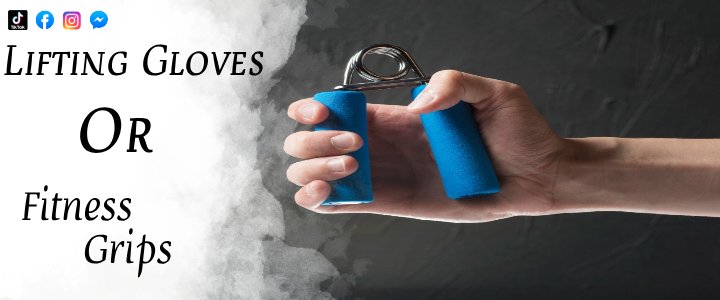The Must-Have Fitness Accessory for Better Workouts
When it comes to fitness accessories, few are as underrated yet essential as fitness grips and lifting gloves. If you’re following a fitness program or trying to shed weight through strength training, your grip strength can often be the deciding factor in how much progress you make. Without the right support, sweaty palms, calluses, and slipping bars can quickly turn your workout into a struggle. That’s where grips and lifting gloves step in—helping you train harder, safer, and with more control.
Both accessories serve the same purpose: protecting your hands and improving your grip during exercises like deadlifts, pull-ups, or rows. But choosing between grips and lifting gloves depends on your personal training style, comfort, and goals. Let’s break down the benefits so you can decide what works best for you.
Why Grips Are a Game-Changer
Grips are thin, durable pads designed to cover the contact point between your hand and the bar. Unlike gloves, fitness grips don’t fully enclose your hands, giving you a more natural feel while lifting. They are especially popular among athletes who want maximum bar control without sacrificing hand protection.
Key Benefits of Grips:
- Better Bar Control: Because grips are thinner, they allow you to feel the bar and maintain natural movement.
- Less Sweating: With open-hand design, grips reduce heat and moisture buildup.
- Durability: High-quality grips made of leather or synthetic materials last longer than most gloves.
- Versatility: Perfect for weightlifting, CrossFit, calisthenics, or pull-based exercises.
In short, fitness grips give you a balance of protection and performance. If your fitness journey involves lifting heavy or doing high-rep pull-ups, grips can help you push past limits.
Lifting Gloves: The Classic Option
Lifting gloves are the more traditional choice, covering your entire hand and sometimes the wrist. Many beginners find them appealing because they offer maximum cushioning and reduce friction.
Advantages of Lifting Gloves:
- Full Hand Protection: Keeps blisters and calluses to a minimum.
- Wrist Support: Many gloves come with built-in straps for added stability.
- Comfort: Ideal for people who dislike the rough texture of barbells or kettlebells.
Gloves are especially good for people in the early stages of their fitness program or those who prioritize comfort over performance feedback. However, some athletes find that the extra padding reduces their connection with the bar.
Grips vs Lifting Gloves: Which One Wins?
- Choosing between grips and lifting gloves comes down to personal preference and training goals.
- Choose Grips if you want durability, better bar feel, and breathability during intense workouts.
- Choose Gloves if you prefer comfort, extra wrist support, and full-hand protection.
Both accessories protect your hands, but if your main keyword is performance, grips often take the lead. They’re compact, lightweight, and designed for athletes who don’t want anything slowing them down.
Whether you’re just starting a diet and fitness program or you’re deep into strength training, fitness grips and lifting gloves can make a real difference in your progress. Hand injuries, slipping bars, and painful calluses don’t have to hold you back.
For many athletes, grips strike the perfect balance of performance and protection, making them a must-have accessory. However, if comfort and support are your top priorities, gloves still hold their place in the gym bag.
At the end of the day, the best choice is the one that keeps you consistent, safe, and motivated in your workouts. Your hands are your strongest tools—protect them wisely, and they’ll help you lift stronger every session.



